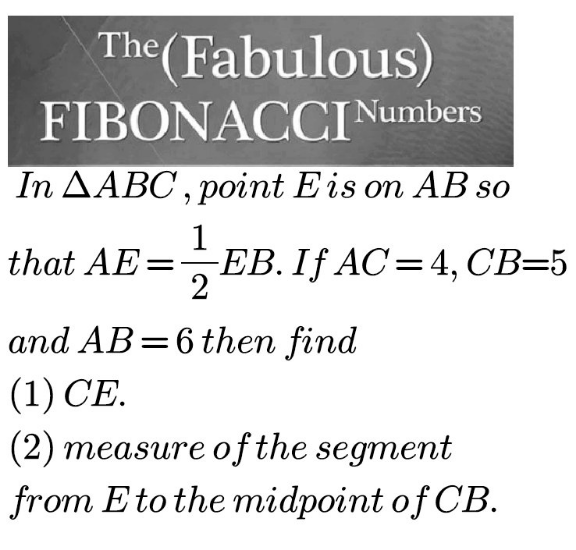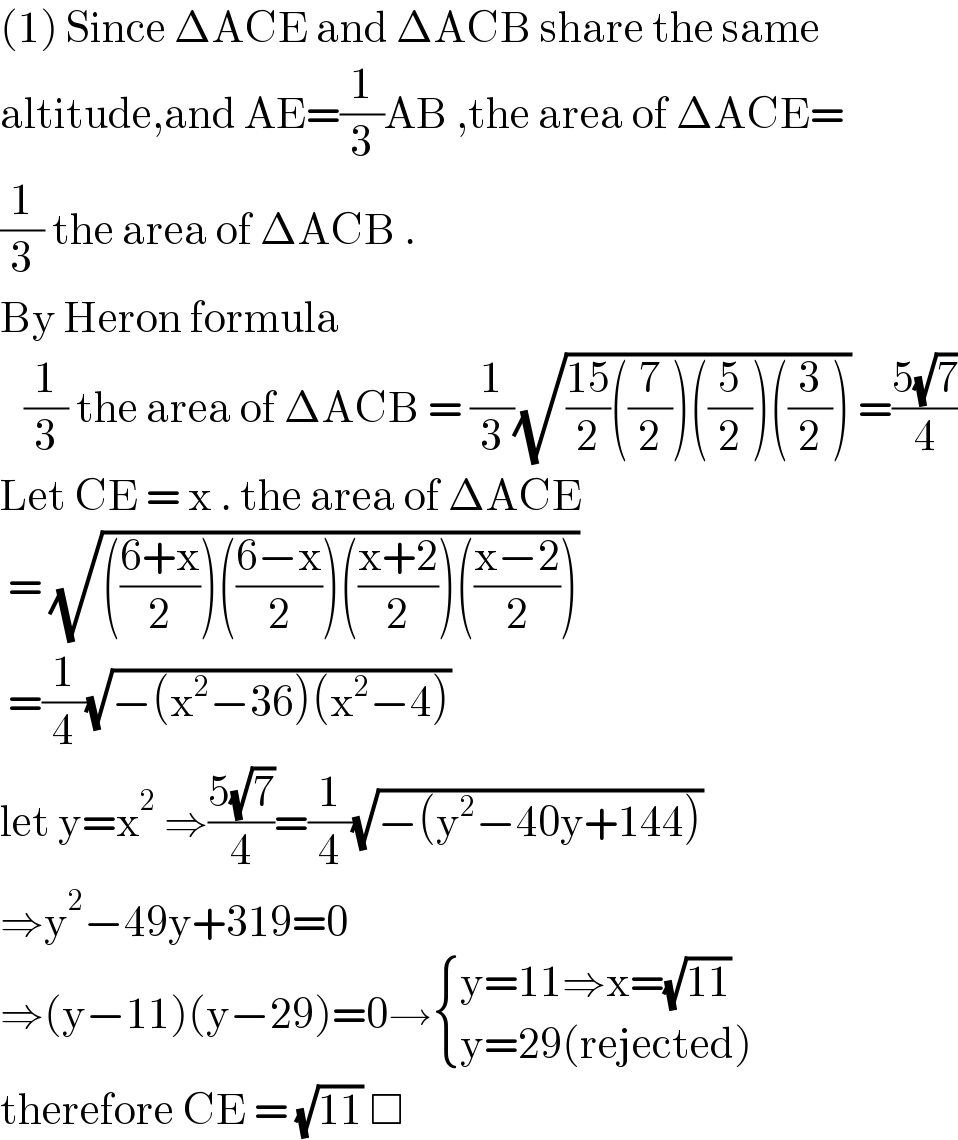
Question and Answers Forum
Question Number 143003 by bramlexs22 last updated on 08/Jun/21

Answered by EDWIN88 last updated on 08/Jun/21

Commented by EDWIN88 last updated on 08/Jun/21
![the other way (1) by applying Stewart′s theorem to ΔABC ⇒(AC)^2 (EB)+(CB)^2 (AE)=AB [ (CE)^2 +(AE)(EB)] ⇒4^2 .4+5^2 .2 = 6[ (CE)^2 +2.4 ] ⇒114 = 6(CE)^2 +48 ⇒CE =(√((114−48)/6)) = (√((66)/6)) = (√(11)) □](Q143005.png)
Commented by bramlexs22 last updated on 09/Jun/21

| ||
Question and Answers Forum | ||
Question Number 143003 by bramlexs22 last updated on 08/Jun/21 | ||
 | ||
Answered by EDWIN88 last updated on 08/Jun/21 | ||
 | ||
| ||
Commented by EDWIN88 last updated on 08/Jun/21 | ||
![the other way (1) by applying Stewart′s theorem to ΔABC ⇒(AC)^2 (EB)+(CB)^2 (AE)=AB [ (CE)^2 +(AE)(EB)] ⇒4^2 .4+5^2 .2 = 6[ (CE)^2 +2.4 ] ⇒114 = 6(CE)^2 +48 ⇒CE =(√((114−48)/6)) = (√((66)/6)) = (√(11)) □](Q143005.png) | ||
Commented by bramlexs22 last updated on 09/Jun/21 | ||
 | ||